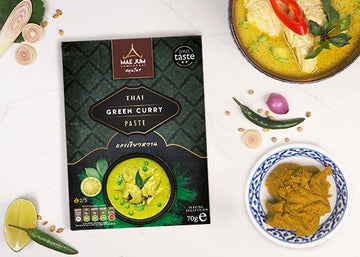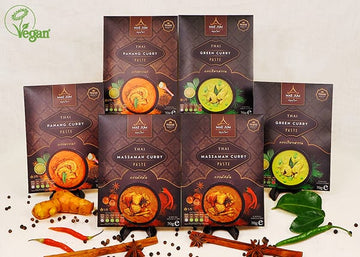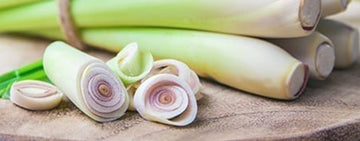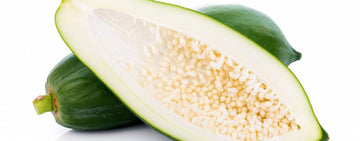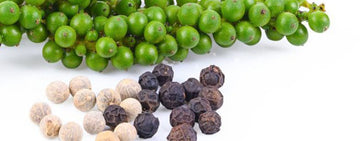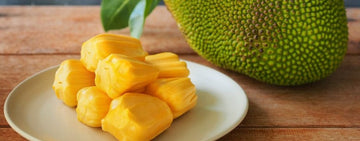Lemongrass: The Fragrant Herb at the Heart of Thai Cuisine and Traditional Healing
Few herbs hold as much culinary and medicinal significance in Southeast Asian culture as lemongrass. Officially known as Cymbopogon, this versatile ingredient has been a cornerstone of Thai cooking for at least 5,000 years. Beyond its role in the kitchen, lemongrass has been revered for its medicinal properties and its use in aromatherapy and traditional healing practices like samunprai.
In this blog, we’ll explore the culinary uses of lemongrass, how to properly prepare it, its unique flavour, and its impressive health benefits. Whether you’re an avid cook or simply interested in the medicinal properties of herbs, lemongrass is a must-have in your kitchen and wellness routine.
What is Lemongrass?
Lemongrass, native to tropical and subtropical regions, is a long, slender plant with a bulbous base. Its appearance is often compared to spring onions, though its uses and flavours are entirely distinct. As the name suggests, lemongrass has a bright, fresh, citrus flavour, with subtle hints of sweetness. Its aromatic oils give it a unique depth that lemon zest can’t fully replicate, making it a favourite among Thai chefs and food lovers alike.
One of the most remarkable aspects of lemongrass is its versatility in the kitchen. It can be used whole, sliced, diced, or crushed, depending on the dish and desired intensity of flavour. Available fresh in most supermarkets or pre-chopped and packaged, lemongrass adds an unmistakable citrusy zing to any recipe, whether it’s a curry, stir-fry, or even a cocktail.
However, fresh lemongrass is always the best option if you want to unlock its full potential. The herb’s flavour is concentrated in its bulbous lower stalk, so when preparing lemongrass, focus on that part. Crushing or bruising the stalk releases its natural oils, intensifying the citrus aroma and making it easier for the flavour to infuse into your dish.

How to Select and Store Lemongrass
When purchasing fresh lemongrass, the quality of the stalk is key to ensuring the best flavour. A good stalk of lemongrass should feel firm, heavy, and dense. If it feels light or has visible bruising, the lemongrass is likely dried out and will lack the essential oils that give it its distinctive flavour.
Once you’ve selected fresh lemongrass, it can be stored in the fridge for up to two weeks. Interestingly, lemongrass has natural preservative qualities and can help keep other ingredients fresh in your fridge. If you don’t plan to use it immediately, you can also freeze lemongrass. Simply slice or chop the stalks and store them in an airtight container for up to six months. Freezing won’t diminish its flavour, making it a great option for those who want to have this herb on hand for future use.
Cooking with Lemongrass
Lemongrass is an incredibly versatile herb that works in both savoury and sweet dishes. It’s widely used in Thai, Vietnamese, and Southeast Asian cuisine, adding a citrusy brightness that pairs beautifully with the rich, bold flavours of spices, chillies, and coconut milk.
Here’s a step-by-step guide to preparing lemongrass for cooking:
- Peel the Outer Layers: Start by removing the dry, tough outer leaves. These layers are fibrous and won’t break down easily in cooking, so it’s best to discard them.
- Cut the Lower Bulb: Focus your attention on the lower bulb, which contains the most flavour. This is the part you’ll use in your cooking.
- Bruising Lemongrass: For recipes that call for larger pieces of lemongrass, such as soups or stews, bruise the stalk to release its aromatic oils. You can do this by bending the stalk a few times or gently rolling a rolling pin over it. Bruising is particularly important for short-cooking methods like stir-frying, where there’s less time for the oils to infuse.
- Chop Finely for Pastes: If you’re making a curry paste or quick soup, finely chop the lemongrass. Smaller pieces make it easier to pound into a paste and allow the oils to release quickly during cooking.
Once prepared, lemongrass can be used in a variety of dishes:
- Curries: Lemongrass is a key ingredient in Thai curries, particularly green and red curries. Its fresh, citrusy notes provide the perfect balance to the richness of coconut milk and the heat of chillies.
- Soups and Broths: The herb’s refreshing flavour makes it an essential component in Tom Yum and Tom Kha Gai soups. Bruised stalks of lemongrass simmer in the broth, imparting a subtle yet distinct flavour.
- Stir-Fries: In quick-cooking dishes like stir-fries, finely chopped lemongrass adds a punch of flavour. Combined with garlic, ginger, and chillies, it creates a vibrant base for vegetables, tofu, or meats.
- Tea and Cocktails: Lemongrass can also be used in beverages. It makes a delicious, soothing herbal tea and can add a citrusy twist to cocktails. For an easy infusion, leave a bruised lemongrass stalk in a bottle of vodka for a few days, then use it to mix refreshing drinks.

Health Benefits of Lemongrass
Beyond its culinary uses, lemongrass has long been recognised for its medicinal properties. In traditional medicine, particularly in Thai and Indian cultures, lemongrass is used to treat a wide range of ailments, from digestive issues to anxiety. Today, its health benefits are well-documented, making it a valuable herb for both cooking and wellness.
1. Rich in Antioxidants
Lemongrass is packed with antioxidants, which help combat free radicals in the body. Free radicals can cause oxidative stress, leading to cell damage and increasing the risk of chronic diseases like cancer and heart disease. Regular consumption of lemongrass, whether through food or tea, can support the body’s natural defences and promote overall health.
2. Supports Healthy Digestion
Lemongrass is widely used in traditional medicine as a natural remedy for digestive issues. It helps relieve bloating, indigestion, and cramps, making it an ideal ingredient for those with sensitive stomachs. The herb has a mild diuretic effect, which can help flush out toxins and improve digestion.
3. Reduces Inflammation
Thanks to its anti-inflammatory properties, lemongrass can help reduce inflammation in the body. This is particularly beneficial for people with conditions like arthritis or other inflammatory disorders. Regularly incorporating lemongrass into your diet may help alleviate symptoms and improve joint health.
4. Relieves Anxiety and Stress
Lemongrass is often used in aromatherapy for its calming effects. The herb’s fresh, citrusy aroma can help reduce stress and anxiety, promoting a sense of relaxation. It’s commonly used in Samunprai massage treatments in Thailand, where the herb is infused into oils or steam baths to ease tension and soothe the mind.
5. Balances Cholesterol Levels
Research suggests that lemongrass may help lower cholesterol levels. Some studies indicate that compounds in the herb can reduce bad LDL cholesterol and raise good HDL cholesterol, supporting heart health and reducing the risk of cardiovascular diseases.
6. Boosts Immunity
Lemongrass contains vitamin C and other compounds that can help boost the immune system. Regular consumption of lemongrass, particularly in teas or broths, may help protect the body against colds, flu, and infections.
Lemongrass in Traditional Healing: Samunprai
In Thai culture, lemongrass isn’t just used for its flavour—it’s also an important part of Samunprai, a traditional form of herbal therapy. Samunprai combines herbal compresses, oils, and massages to promote relaxation and healing. Lemongrass, with its anti-inflammatory and calming properties, is often included in these treatments.
The herbal poultices used in Samunprai are filled with lemongrass, kaffir lime, turmeric, and other medicinal herbs. These poultices are steamed to release the herbs’ natural oils, then applied to the skin to ease muscle pain, improve circulation, and promote healing. Lemongrass’ aromatic properties also help clear the mind, making it a key ingredient in these traditional wellness practices.
Conclusion: Embracing Lemongrass in Your Cooking and Wellness Routine
Lemongrass is truly a remarkable herb. Its versatility in cooking, combined with its numerous health benefits, makes it a staple in both the kitchen and traditional medicine. Whether you’re making a Thai curry, sipping lemongrass tea, or using it in aromatherapy, this herb has a place in many aspects of daily life.
By adding lemongrass to your cooking, you’ll not only elevate the flavours of your dishes but also support your overall well-being. Its anti-inflammatory, antioxidant, and digestive benefits make it a valuable addition to any diet, while its calming properties can help reduce stress and anxiety.
So next time you’re preparing a meal or looking for a natural remedy to boost your health, reach for lemongrass. Its unique combination of bright, citrusy flavour and healing properties will enrich both your food and your wellness routine.
If you enjoyed reading our get to know: Lemongrass blog post, please give this post a rating and subscribe for new blog updates and recipes. Follow and tag us @maejumsamunprai on social media for great foodie content and giveaway competitions! Read more on our blogs today!
